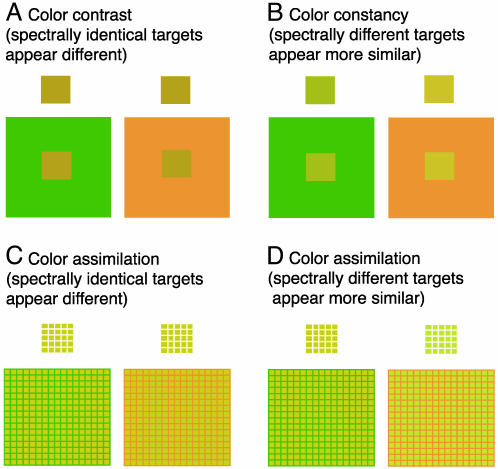Fig. 1.
Color context effects. (A) Color contrast. The two spectrally identical central targets (see Insets above) appear different when placed in different chromatic contexts. (B) Color constancy. Two spectrally different central targets appear more similar when embedded in different chromatic contexts. (C) Color assimilation (spectrally identical targets). Spectrally identical targets (the small squares) appear different in the context of the greenish lines on the left vs. the reddish lines on the right. (D) Color assimilation (spectrally different targets). Iteration of the stimulus elements can also make spectrally different targets appear more similar. Note that the contexts in A and B make the color appearance of the targets shift away from that of the contexts; the contexts in C and D, however, shift the color appearance of the targets toward that of the contexts.

